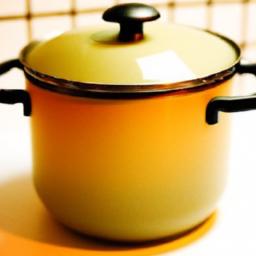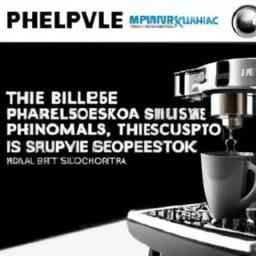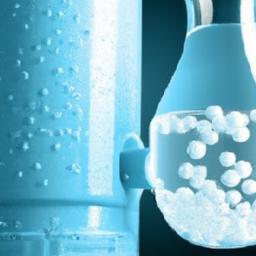Choosing Between Soup Pots and Stock Pots: A Complete Guide for Every Home Chef
Have you ever paused in front of your kitchen cabinets, puzzled over which pot to grab for your next meal? If so, you’re not alone. Deciding between a soup pot and a stock pot can seem confusing at first glance. Both seem designed for simmering liquids, but do they really perform the same role? Understanding their differences can transform your culinary outcomes.
At How To Cook Gourmet, we know that picking the right cookware can elevate your cooking from good to gourmet. Let’s explore what distinguishes soup pots from stock pots, why those differences matter, and how to choose wisely for your cooking needs.
Identifying Key Differences: Soup Pot vs. Stock Pot
Picture two sizable pots in your kitchen: one is a soup pot, the other a stock pot. How do you tell them apart?
Soup pots generally feature a wider diameter and lower height, providing a broad surface area ideal for evenly cooking chunks of vegetables, meat, or legumes. Their design encourages some evaporation, perfect for thickening rich stews or chowders. On the other hand, stock pots are typically taller and slimmer, a shape intended to minimize evaporation during slow, prolonged simmering-as when extracting flavors from bones for broths or stocks.
| Aspect | Soup Pot | Stock Pot |
|---|---|---|
| Form Factor | Low and wide | Tall and narrow |
| Optimal Use | Hearty soups, stews, thick sauces | Clear broths, stocks, pasta boiling |
| Lid Design | Ventilated for steam release | Snug fit to retain steam |
| Batch Size | Smaller to medium volumes | Large quantity cooking |
The lid plays a pivotal role as well: soup pots often have lids that allow some steam to escape, preventing boil-overs and helping concentrate flavors, whereas stock pot lids seal tightly to trap moisture and aromas, essential for deep, rich stocks.
How Dimensions Influence Cooking Performance
Shape and size heavily impact how heat transfers and how ingredients cook. Stock pots, with their tall bodies, give ingredients ample space to move, which is beneficial during tasks like simmering large batches of broth or one-pot chili recipes that require prolonged cooking times. Conversely, soup pots, being wider and shallower, increase the liquid’s surface area, promoting faster simmering and reducing cooking time.
Heat distribution varies as well. Stock pots concentrate heat primarily at the base, which suits slow simmering. Soup pots spread heat across the broader base, facilitating more even and quicker cooking-ideal for recipes where frequent stirring is needed.
| Pot Type | Shape | Cooking Style | Heat Distribution |
|---|---|---|---|
| Stock Pot | Tall and slim | Slow cooks, long simmers | Concentrated at bottom |
| Soup Pot | Wide and low | Faster simmer, frequent stirring | Even along base |
Keep your stove surface in mind-larger pots might not spread heat evenly on small burners, potentially affecting cooking quality. Your kitchen setup can influence your pot selection as much as your recipes do.
- Batch volume: Bigger pots handle more but require longer to reach temperature.
- Shape’s influence: Tall pots are great for slow, steady cooking; wide pots favor fast, even heat.
- Recipe preference: Tailor your choice to the dishes you craft most often.
The Role of Materials: Finding the Ideal Pot Composition
The stuff your pot is made from affects cooking outcomes as much as shape and size. Some materials retain heat better, while others respond more rapidly. Which one fits your kitchen’s demands?
- Stainless Steel: A favorite for its durability and sleek appearance. It provides moderate heat distribution and is typically dishwasher safe, making it user-friendly.
- Cast Iron: Excellent at holding and evenly distributing heat, perfect for long simmers, though it may react with acidic ingredients and requires specific care.
- Aluminum: Known for its lightweight and quick heating, but prone to warping under intense heat and can scratch easily.
- Enamel-Coated: Combines the heat retention of cast iron with an easy-clean, non-reactive surface suitable for delicate recipes.
| Material | Heat Conductivity | Durability | Best Applications |
|---|---|---|---|
| Stainless Steel | Moderate | High | Everyday cooking |
| Cast Iron | Slow but steady | Very high | Long braises, slow simmer |
| Aluminum | Fast | Medium | Quick heats, lightweight usage |
| Enamel-Coated | Moderate | High | Acidic sauces, easy cleaning |
Deciding between quick heating versus even, sustained warmth will direct you to the material best suited for your kitchen style.
When to Choose a Soup Pot Instead of a Stock Pot
Picture cooking a rich gumbo or a velvety bisque for a family dinner. Which pot fits the task better? Soup pots are designed to accommodate dishes requiring thorough stirring and moderate evaporation.
Because of their broad base and shorter height, soup pots provide easy access for spicing, stirring, and tasting. Their open design supports faster infusion of flavors, making them ideal for recipes needing frequent attention.
- Small to medium batch cooking: Ideal for everyday meals smaller than feeding a large crowd.
- Gentle simmering: Necessary for delicate soups, chowders, and sauces.
- Convenient stirring: Spacious openings accommodate large spoons and ladles effectively.
| When to Use Soup Pot | When to Opt for Stock Pot |
|---|---|
| Stews, thick soups | Large volume broths |
| Simmering sauces | Boiling pasta or vegetables in bulk |
| Recipes needing stirring | Extended boiling |
For those cooking creamy lentil stews or seafood bisques, soup pots offer manageable size and efficient cooking surfaces.
Finding Your Perfect Pot Size
Size makes a world of difference when picking a pot. Cooking for one or two people calls for a smaller pot, while preparations for gatherings require something larger.
| Pot Type | Usual Capacity | Best Use |
|---|---|---|
| Soup Pot | 4 to 8 quarts | Day-to-day meals, soups, stews |
| Stock Pot | 12 to 20 quarts | Batch cooking, broths, pasta for groups |
Also consider storage possibilities-oversized pots can dominate counter and cabinet space. Choosing an appropriately sized vessel simplifies both cooking and cleanup tasks.
Easing Cleaning: Maintenance Tips for Soup and Stock Pots
No one enjoys scrubbing stubborn food residues. But with proper care, cleanup can be swift and effective for both pot types.
- Soak before scrubbing: Warm water with dish soap for 15 minutes loosens stuck bits.
- Avoid abrasive scrubbers: Use soft sponges or nylon brushes to preserve finishes.
- Burnt food rescue: Baking soda paste gently lifts stubborn stains without damage.
- Don’t overlook handles: Grease often accumulates in these spots.
| Pot Type | Dishwasher Safe | Recommended Cleaning |
|---|---|---|
| Soup Pot | Typically no | Hand wash with soaking |
| Stock Pot | Usually yes | Dishwasher or gentle scrub |
Smart nightly cleaning saves effort and extends the life of your cookware.
Top Pot Picks for Daily Cooking
Different cooks demand different pots. Our favorite picks cater to a range of kitchen lifestyles:
| Pot Model | Best Suited For | Size (Quarts) | Material |
|---|---|---|---|
| Essential Soup Pot | Everyday soups and stews | 6-8 | Stainless steel |
| Robust Stock Pot | Broths, large batches | 12-16 | Aluminum with stainless steel coating |
| Versatile Mid-Size Pot | Small stocks and chili | 8-10 | Ceramic-lined |
We favor pots offering versatility without excess bulk. Soup pots in the 6-8 quart range serve family-sized meals fluidly; stock pots excel when handling gallons of broth or communal pasta.
Can One Pot Handle It All? A Realistic Look
Is it possible for one pot to cover every culinary need? While tempting, especially when facing limited kitchen space, it’s wise to acknowledge each pot’s specialty.
| Feature | Soup Pot | Stock Pot |
|---|---|---|
| Capacity | Medium (4-6 quarts) | Large (8-12 quarts+) |
| Primary Use | Soups, stews, smaller batches | Stocks, bulk boiling, pasta |
| Shape | Short and wide | Tall and narrow |
| Heat Behavior | Fast, even simmer | Slower heat build-up, steady temp |
A soup pot is like the quick, nimble sous-chef-great for speedy, small-batch meals. The stock pot is your slow-and-steady workhorse. Depending on your typical cooking habits-do you cook large meals or quick dinners?-you might prefer one, or both.
Frequently Asked Questions: Soup Pot vs. Stock Pot
Q: What fundamentally distinguishes a soup pot from a stock pot?
A: Soup pots are shallow and broad, designed for faster cooking and easier stirring; stock pots are taller and slimmer, reducing evaporation during long simmers.
Q: Can I make soup in a stock pot?
A: Certainly. Stock pots are ideal for large soup batches but can be cumbersome for small recipes.
Q: Is a soup pot suitable for stocks?
A: While possible, soup pots allow more liquid to evaporate, which may not yield the rich, concentrated stocks stock pots produce.
Q: Which pot is better for boiling pasta?
A: Stock pots are preferable due to their tall shape preventing water from boiling over and allowing noodles to cook evenly.
Q: What materials do these pots typically come in?
A: Commonly stainless steel, cast iron, aluminum, and enamel-coated versions are available, each with different heat and care qualities.
Q: Do soup pots heat faster?
A: Yes, their wider surface area allows quicker heating compared to deep stock pots.
Q: How should I decide which pot to buy?
- Consider the number of people you cook for.
- Reflect on the typical recipes you prepare.
- Think about whether you prefer fast meals or slow-cooked dishes.
Final Thoughts: Making Your Pot Choice with Confidence
Understanding the unique characteristics of soup pots and stock pots empowers you to match your cookware to your cooking style. Soup pots excel at gentle simmering and manageable portions; stock pots thrive with large, extended cooking projects. For many home chefs, owning both provides the flexibility needed to create a diverse range of dishes.
Next time you stand before your pots, ask yourself which story you want your food to tell. Armed with this knowledge, you can choose the pot that makes both cooking and dining a joyful experience. What will you prepare first with your newly chosen cookware?




